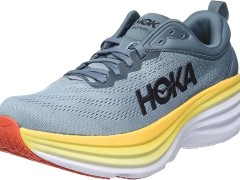Sleep Patches are wearable patches infused with sleep-inducing ingredients like melatonin, magnesium, CBD, and natural herbs such as chamomile or valerian root. Unlike traditional oral supplements, these patches release their active ingredients transdermally (through the skin) over a period of hours. This slow-release mechanism is ideal for individuals who suffer from inconsistent sleep patterns, as oral melatonin often peaks in an hour and may wear off in just 4 hours.
One of the key appeals of sleep patches is their convenience and non-invasive nature. They are typically applied to areas like the upper arm or shoulder before bed and left on overnight. Their effectiveness lies in delivering ingredients steadily without relying on digestion, which may be compromised in some users.

Types of Sleep Patches
-
Melatonin-Based Patches: The most common variant. These patches deliver 3–10 mg of melatonin gradually throughout the night.
-
Herbal Blend Patches: Include ingredients like valerian root, passionflower, and lavender for a more natural aid.
-
CBD-Infused Patches: These use cannabidiol to reduce anxiety and calm the mind before sleep.
-
Combination Patches: Mix melatonin with herbal or amino acids (e.g., L-theanine) for enhanced effect.
How to Choose a Sleep Patch
When selecting a sleep patch, consider:
-
Ingredients: Look for clinically supported components like melatonin, magnesium, and CBD.
-
Dosage: Ensure the dosage suits your sensitivity. Low-dose options are better for first-time users.
-
Adhesive Quality: Hypoallergenic adhesives reduce the chance of skin irritation.
-
Transparency: Brands that disclose lab testing and sourcing practices tend to be more trustworthy.
Limitations and Risks
-
Skin Sensitivity: Some users experience irritation or rashes due to the adhesive or ingredients.
-
Effectiveness Varies: Not all users respond to melatonin the same way.
-
Limited Long-Term Research: There is less scientific data on long-term use of transdermal melatonin.
Market Overview
Sleep patches are part of a wider trend known as "Sleepmaxxing," which refers to the viral products and hacks aimed at optimizing sleep. Social media platforms like TikTok have over 60 million posts related to sleep patches, showing just how trendy the category has become.
One of the top-selling sleep patch brands generates around $275,000/month on Amazon alone. Here's a breakdown of third-party sales data across sleep-related products:
| Product | Description | Estimated Monthly Amazon Revenue |
|---|---|---|
| Sleep Patch (Top Brand) | Melatonin-infused wearable patch | $275,000 |
| Olly Sleep Gummies | Oral melatonin + L-theanine | $2,000,000+ |
| Mzoo Sleep Mask | 3D ergonomic eye mask | $1,860,000 |
| Manta Sleep Mask | Adjustable blackout mask | $384,000 |
| Cervical Pillow | Orthopedic memory foam neck pillow | $1,400,000 |
| Hatch Restore | Smart alarm and white noise machine | $700,000 |
Comparison of Popular Sleep Aids
| Product Type | Examples | Key Benefits | Price Range |
|---|---|---|---|
| Sleep Patches | Melatonin, CBD, Herbal | Long-lasting, discreet, oral-free | $10–$30 |
| Sleep Masks | Mzoo, Manta | Light blocking, portability | $15–$50 |
| Cervical Pillows | Memory foam orthopedic | Neck support, spine alignment | $30–$100 |
| Smart Devices | Hatch Restore, Dodow | Sound therapy, light therapy | $60–$150 |
| Oral Supplements | Gummies, tablets, teas | Easy to consume, fast-acting | $10–$25 |
Other Popular Sleep Aids
-
Smart Devices: Sleep trackers, white noise machines, and sunrise simulators.
-
Ergonomic Bedding: Cervical pillows and cooling mattresses that optimize posture and temperature.
-
Supplements: Melatonin gummies, magnesium powders, and herbal teas.
-
Weighted Blankets: Known for reducing anxiety and improving sleep depth.
Conclusion
Sleep patches are quickly gaining recognition as a user-friendly and innovative sleep aid. While not perfect for everyone, they fill a unique niche for those who want a drug-free, oral-free solution. As part of the booming Sleepmaxxing trend, sleep patches, along with sleep masks, ergonomic bedding, and calming supplements, reflect a growing consumer focus on improving sleep quality through accessible and tech-forward solutions. For companies and consumers alike, the data shows this sector is not just a trend—it's a transformation in how we approach sleep.


